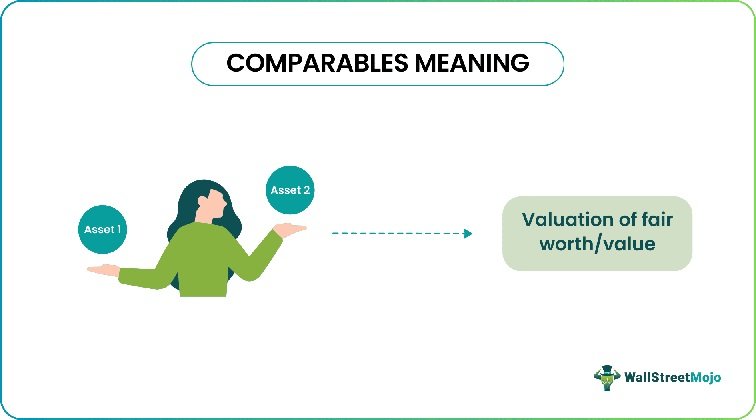Understanding the value of a property on the real estate market is a bit complicated, but it is necessary.
A reliable and easy to follow method would be to compare the property to similar properties in the area that have sold recently. This method is referred to as market comparables or ‘comps’ for short, in real estate.
Gaining a guide through what market comparables are and ultimately understanding the after-repair value (ARV) of properties in real estate is important to gain long-term success.
What are Market Comparables?
Market comparables, or comps, are recently sold properties that are similar in size, condition, location, and features to the property being evaluated. Importance of Market Comparables
- Accuracy: Gain an idea of a realistic value of a property through recent market scenarios.
- Transparency: Allows for a clear rationale behind the estimated value.
- Market Insight: Offers insights into current market conditions and trends.
Steps to Using Market Comparables to Estimate Property Value
1. Identify Comparable Properties
Importance:
Comparing properties requires a crucial aspect; that the properties you are looking at are similar to the ones you have.
Criteria for Selecting Comparables:
- Location: Choose properties in the same neighborhood or within a close proximity to your property, location of properties in real estate is key..
- Size: Compare properties with similar square footage and lot size.
- Age and Condition: Select properties of a similar age and condition.
- Features:The comparison for price needs to be fair, which means the amenities available in your properties must also be available in the properties you are researching.
Example:
If you are evaluating a three-bedroom, two-bathroom house with 2,000 square feet in a suburban neighborhood, you should look for similar three-bedroom, two-bathroom houses with around 2,000 square feet in the same or nearby neighborhoods.
2. Gather Data on Comparable Sales
Importance:
Accurate and up-to-date data is essential for a reliable estimate. Gathering comprehensive information about comparable sales helps form a solid basis for comparison.
Sources of Data:
- Multiple Listing Service (MLS): A database used by real estate agents to list and find properties.
- Public Records: County or municipal records that provide details on property sales.
- Real Estate Websites: Real estate websites like Zillow, Redfin, and Realtor.com offer sales data and property information.
- Real Estate Agents: Professional agents can provide access to MLS data and offer expert insights.
Example:
Using MLS, you find three comparable properties that recently sold: one sold for $350,000, another for $360,000, and the third for $355,000.
3. Analyze Comparable Sales Data
Importance:
This step is critical to ensure the comps are truly reflective of the subject property’s value.
Factors to Consider:
- Sale Price: The final sale price of the comparable properties.
- Sale Date: Recency is important in the sales data; the more recent it is, the better.
- Adjustments: Adjust for differences between the subject property and comparables. For instance, if a comparable has an extra bedroom, adjust its sale price downward to reflect the difference.
Example:
If a comparable property sold for $350,000 but has one more bedroom than the subject property, you might adjust the sale price to $340,000 to account for the difference.
4. Calculate the Average Price per Square Foot
Importance:
Calculating the average price per square foot provides a standardized metric to compare properties of different sizes.
Steps:
- Determine the Price per Square Foot: Divide the sale price of each comparable by its square footage.
- Calculate the Average: Add the price per square foot of all comparables and divide by the number of comparables.
Example:
- Comparable 1: $350,000 / 2,000 sq. ft. = $175/sq. ft.
- Comparable 2: $360,000 / 2,100 sq. ft. = $171.43/sq. ft.
- Comparable 3: $355,000 / 1,950 sq. ft. = $182.05/sq. ft.
Average price per square foot = ($175 + $171.43 + $182.05) / 3 = $176.83
5. Adjust for Market Conditions
Importance:
Adjusting for current market conditions ensures the estimated value reflects the latest trends and economic factors affecting the real estate market.
Considerations:
- Market Trends: Are prices generally increasing or decreasing in the area?
- Supply and Demand: Is there a high demand for properties with low inventory, or is the market saturated?
- Economic Factors: Consider interest rates, employment rates, and other economic indicators.
Example:
If the market is currently experiencing a 5% increase in property values, you might adjust the estimated value upward to reflect this trend.
6. Estimate the Property Value
Importance:
The final step is to combine all the data and adjustments to estimate the fair market value of the subject property.
Steps:
- Apply the Average Price per Square Foot: Multiply the average price per square foot by the square footage of the subject property.
- Adjust for Specific Differences: Make any final adjustments for unique features or conditions of the subject property.
Example:
If the subject property is 2,000 square feet and the average price per square foot is $176.83, the estimated value is 2,000 * $176.83 = $353,660. If you adjust for market conditions with a 5% increase, the final estimated value is $353,660 * 1.05 = $371,343.
Conclusion
Using market comparables to estimate property value is a reliable and widely used method in real estate.
By carefully selecting comparable properties, gathering accurate sales data, analyzing the data, calculating the average price per square foot, adjusting for market conditions, and making final adjustments, you can arrive at a fair and accurate estimate of a property’s value.
This method not only provides a realistic valuation based on actual market transactions but also helps buyers, sellers, and investors make informed decisions in the real estate market.
Understanding and effectively using comps ensures that you are well-equipped to navigate the complexities of property valuation.
